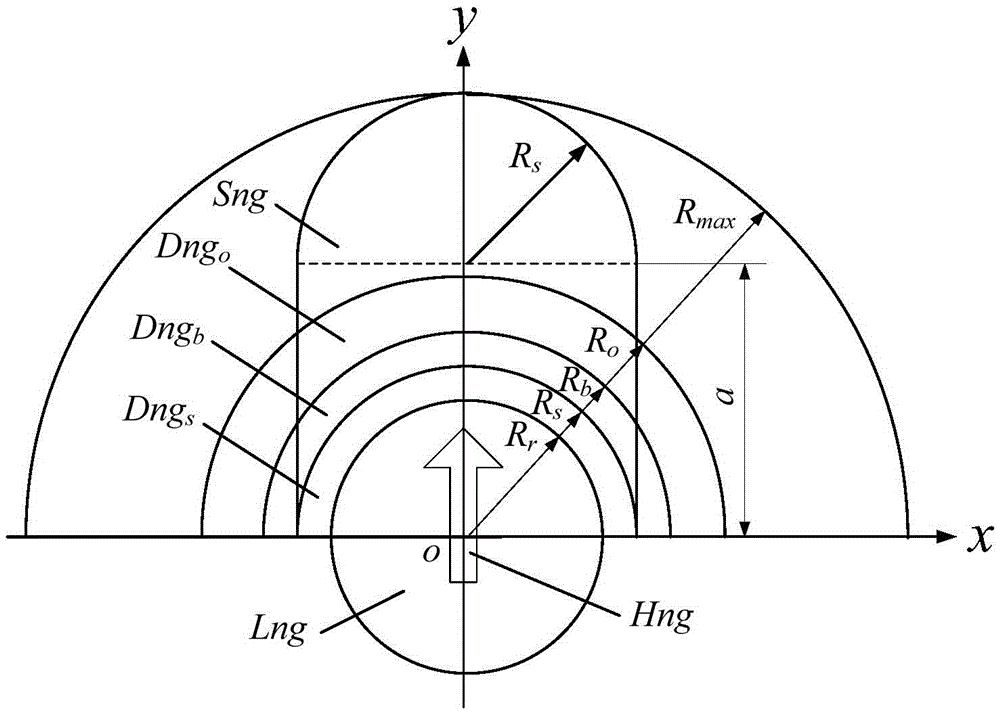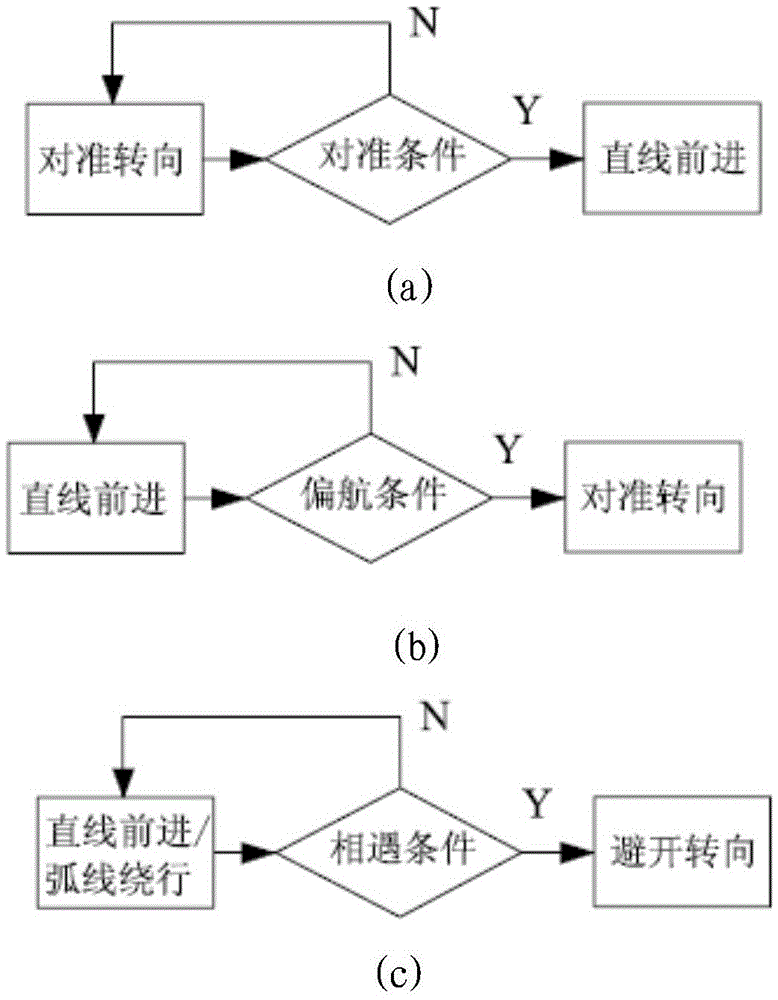Bionic-tentacle-based robot autonomous navigation method
A technology for autonomous navigation and robotics, applied in the field of intelligent robots, which can solve problems such as the difficulty of practical application of bug algorithms
- Summary
- Abstract
- Description
- Claims
- Application Information
AI Technical Summary
Problems solved by technology
Method used
Image
Examples
Embodiment 1
[0079] Figure 5 Schematic diagram of the autonomous navigation process of the robot around linear contour obstacles. The robot moves straight from the starting point S towards the target point (the alignment condition and yaw condition are judged by the bionic tentacles Hng to ensure that the current heading angle of the robot is always along the XT direction), to the meeting point H 1 The point encounters an obstacle (by the bionic tentacles Dng s detected) stops and starts to go around the edge of the obstacle. Thanks to the bionic tentacles Dng o The detected obstacle is on the left side, and the robot takes the behavior of avoiding turning right and turning left in an arc to walk around the edge of the obstacle (by the bionic tentacles Dng b Judging avoidance conditions, by bionic tentacles Dng s and Dng o Judging the encounter condition), passing the encounter point H 2 and H 3 , to the departure point L 1 It breaks away from the edge of the obstacle (detected by...
Embodiment 2
[0081] Figure 6 It is a schematic diagram of the autonomous navigation process of the robot around unconditional obstacles. As mentioned above, the robot completes the navigation process around unconditional obstacles by relying on the bionic tentacles to perceive the surrounding environment, real-time excitation triggers the corresponding walking behavior to complete the entire navigation process, and the final trajectory of the robot is S-H 1 -L-T. Due to the unconditional shape of the obstacle contour, the length of the arc segment of each arc circumnavigation is not necessarily equal. Therefore, the present invention circumvents the edge of the obstacle in a segmented arc, which can not only ignore the limitation of the outer dimension of the obstacle, but also easily get away from the edge of the obstacle, with a short moving path and good environmental adaptation.
Embodiment 3
[0083] Figure 7 It is a schematic diagram of the autonomous navigation process of the robot circumventing multiple obstacles. For the sake of simplicity, two obstacles with unconditional shapes are chosen as examples to illustrate. Starting from the starting point S, the robot goes straight to the target point three times and circumnavigates the edge of the obstacle twice, and finally reaches the target point T successfully. The trajectory is S-H 1 -H 2 -L 1 -H 3 -H 4 -H 5 -H 6 -L 2 -T. As the number of obstacles increases, the number of times the robot goes around the edge of the obstacle also increases. During the obstacle circumvention process, the bionic antennae Dng o Can accurately determine the position of the obstacle (the design has R o >R b To improve the accuracy of obstacle orientation detection), so as to ensure the global optimal motion path of robot navigation.
[0084] Compared with the prior art, the present invention has the following advantages...
PUM
 Login to View More
Login to View More Abstract
Description
Claims
Application Information
 Login to View More
Login to View More - R&D
- Intellectual Property
- Life Sciences
- Materials
- Tech Scout
- Unparalleled Data Quality
- Higher Quality Content
- 60% Fewer Hallucinations
Browse by: Latest US Patents, China's latest patents, Technical Efficacy Thesaurus, Application Domain, Technology Topic, Popular Technical Reports.
© 2025 PatSnap. All rights reserved.Legal|Privacy policy|Modern Slavery Act Transparency Statement|Sitemap|About US| Contact US: help@patsnap.com



